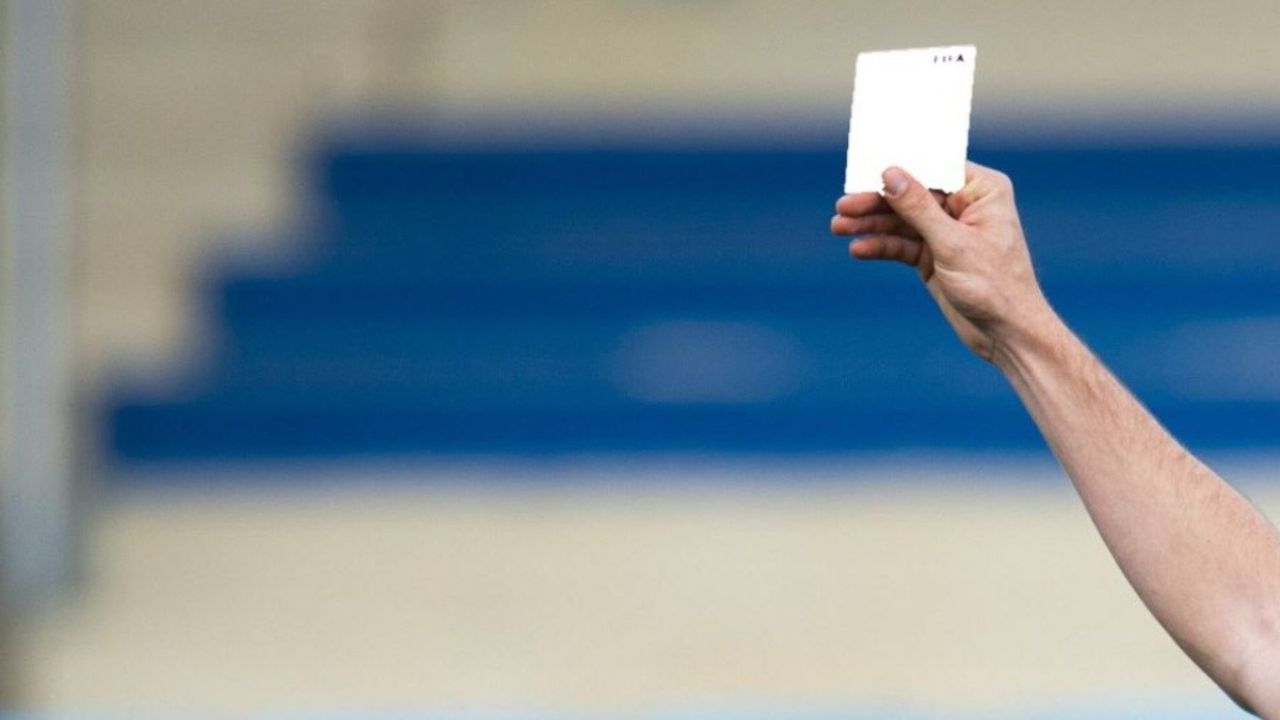Football is more than just a sport; today, it embodies a delicate balance between passion for the game and respect for the rules. Referencing is at the heart of this dynamic, a crucial component that guarantees smooth running, fairness, and fair play. In this turbulent sporting landscape, the white card emerges as a revealing innovation, a nuance between the severity of traditional cards and the celebration of respect on the field.
Over the years, football has evolved in terms of tactics and performance and how it manages player behavior. Discover an in-depth exploration of the mysterious white card, a temporary exclusion tinged with prevention and education. Let’s decipher the white card in football!
What is the white card in football?
The white card, a recent innovation in football, stands out for its preventive and educational nature. Used in certain competitions, notably in France, it aims to promote fair play and eliminate unsporting behavior. When a player is shown a white card, it is generally due to conduct deemed inappropriate, excessive, or clear disapproval of the referee, whether through gestures, words, or other actions. in the field.
The temporary ten-minute ban accompanying the white card allows players to reflect on their actions while clearly warning them of the consequences of inappropriate behavior. This card illustrates the desire of football governing bodies to create a respectful and fair play environment on the pitch.
When should a white card be given in football?
The referee is responsible for awarding a white card when he observes behavior contrary to sporting ethics. This may include excessive protest, disrespectful words towards opponents or the referee, or any other manifestation of a lack of fair play. The decision to issue a white card is based on the referee’s discretion, aiming to maintain discipline while providing a learning opportunity for the player concerned.
The white card is not only a sanction but an invitation to improve behavior on the pitch. Focusing on prevention and education, it reminds players of the importance of mutual respect and fair play in football.
What are the cards in football?
Besides the white card, football traditionally uses two other types of cards, yellow and red, to regulate player behavior.
- Yellow Card: It is awarded for minor fouls, unsportsmanlike acts, or excessive protests towards the referee. Two yellow cards in the same match lead to a red card.
- Red Card: It is awarded in response to serious fouls, violent behavior, or after two yellow cards. A player sent off with a red card must leave the field, leaving his team outnumbered.
All of these boxes contribute to establishing a fair playing environment and guaranteeing respect for the rules and sporting ethics on the football field.
Accumulates boxes during a meeting
The box dance on the field can be tricky. A player who has already received a yellow card may be shown a white card during the same match, resulting in a temporary suspension. Likewise, if a player has already received a white card and is temporarily sent off, he may receive a yellow card and remain on the pitch.
Summary:
- White card + white card = red card (definitive exclusion)
- Yellow card + white card = temporary exclusion of 10 minutes (no red card)
- White card (temporary exclusion of 10 minutes) + yellow card = player remains on the pitch (no red card)
These nuances of cards add a strategic and educational dimension to football, where discipline combines with the opportunity to correct players’ behavior on the field.
Looking for economic and brilliant soccer gear? Visit our Shop now.







